Over the weekend, I attended the Singapore Gardening Society (SGS)’s February meet up, I try my best to make it when I’m in town. This time, we visited Mr Tan Wee Lee and Mrs Rosalind Tan garden, which has previously received a Community in Bloom award. They were wonderful hosts, sharing knowledge about their garden, and ensuring society members were well fed.
All visitors were greeted by this majestic 50-year old Elephant Ear Fig Tree, abundant with fruit. Mrs Tan said that she cooks the figs with chicken soup, and that making tea from the leaves of this species is supposedly good for diabetes. I heard Mr Tan saying that in order to have a tree like that, one needs to shape it as such. He’s a bonsai enthusiast, as you will see later on.
Even though it was an unbearably hot day, their front garden is well shaded by this tree, and well cooled by their pond. The difference in temperature was remarkable, and made it a very comfortable experience.
Mrs Tan is also known as Madame Butterfly, I’m assuming it’s because of her love for butterflies. She had collected Painted Jezebel Butterfly eggs from Khoo Teck Puat hospital, where she is the Chief Gardener, and kept them in a container at home to increase its chances of maturation and metamorphosis, she and her husband had planned to release them in their garden later that day.
Collectively, there are more than 500 species of healthy looking plants on their compound. While the couple’s garden is very much intentioned towards attracting birds and butterflies, they have edible plants which include fruit trees such as Bananas, Chiku, Papaya, and that glorious Fig tree, and vegetables such as Cucumber and Mani Cai, and herbs. Mr and Mrs Tan also rear fish, such as tilapia, which they eat on occasion.
Here’s a unique plant called the Bat Lily, one of many plants in this garden that I’ve not seen before. Mr Tan also showed me his Mistletoe plant, which had been naturally grafted by a bird onto a tree. He said he has tried to manually do so, but it hasn’t worked. Birds often bring them plants, like the Birds’ Nest Ferns seen beside the pond.
Here are the Painted Jezebel butterflies that Mr and Mrs Lee were planning to release upon maturation.
On top of preparing food and beverages, Mr and Mrs Tan even took the trouble to print this for us to read. Here’s the recipe for the Khoo Teck Puat Hospital Oyster Sling, a refreshing, tasty, natural purple-coloured drink using the Oyster Plant. I greatly enjoyed the Lontong, seeing the picture makes me salivate.
Mr Tan is a self taught sculptor, and shared that his father was also a sculptor. Here are some of his lovely works on display.
I enjoyed this session so much, it was such a sensorial delight, and I look forward to more garden visits.
If the thought of meeting experienced gardeners and visiting green spaces interests you, consider joining the Singapore Gardening Society. You will not only be supporting a long-standing society but you’ll be taking away meaningful experiences and deep rooted (excuse the pun) gardening wisdom. Why not, huh?

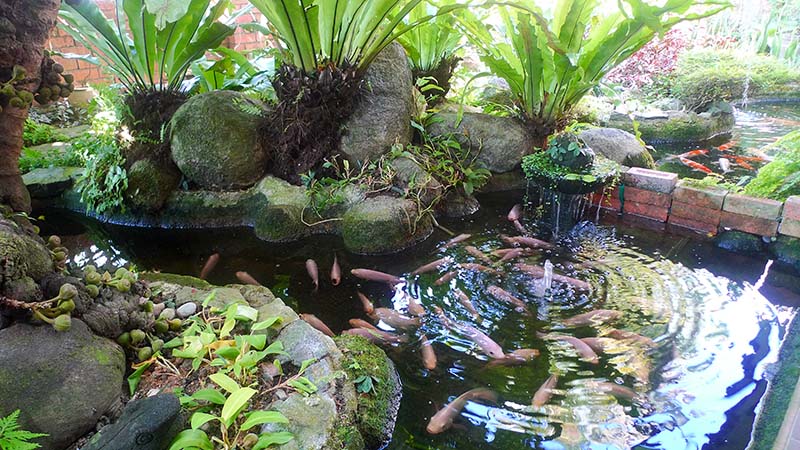
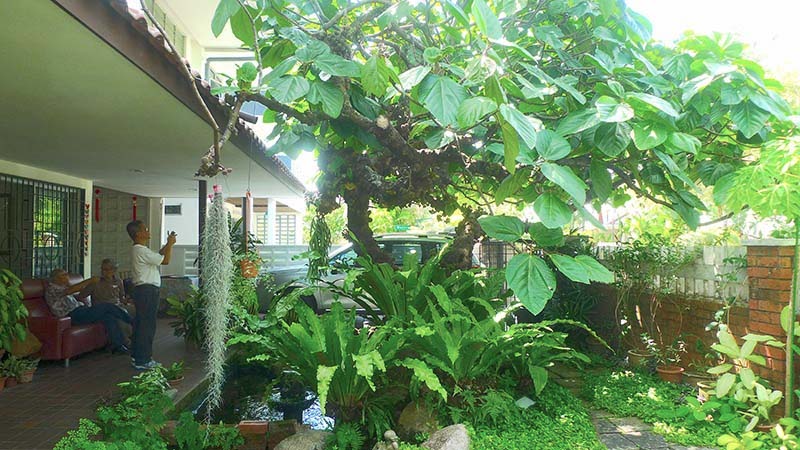
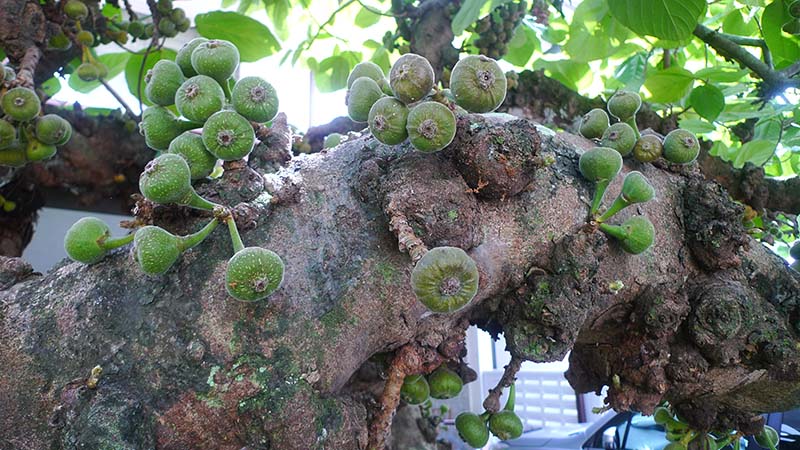
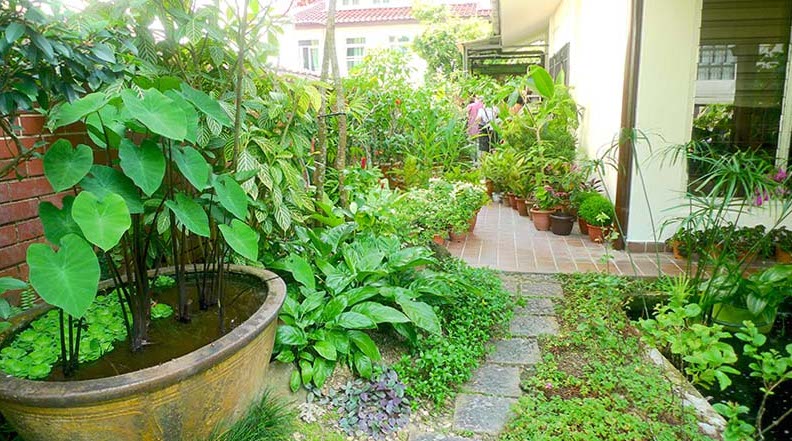
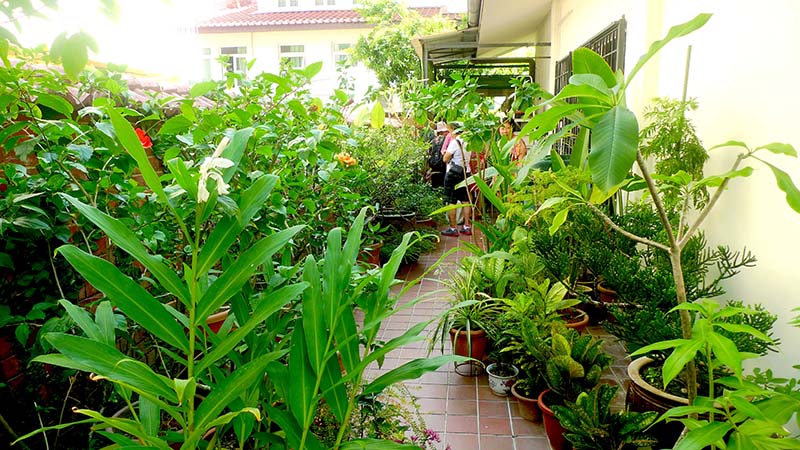
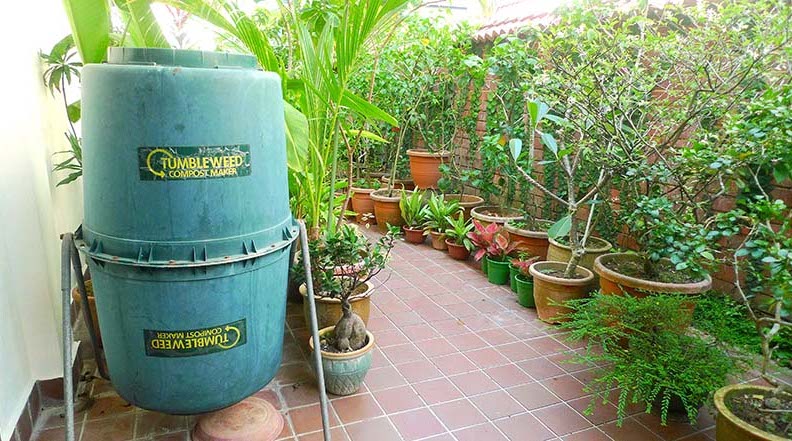
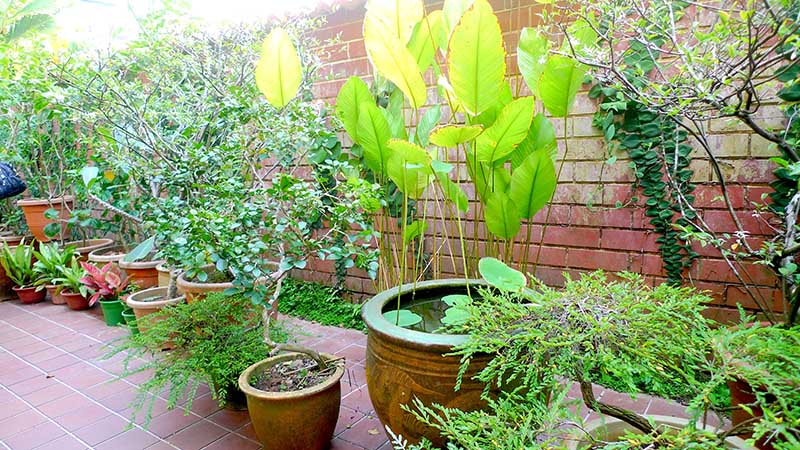
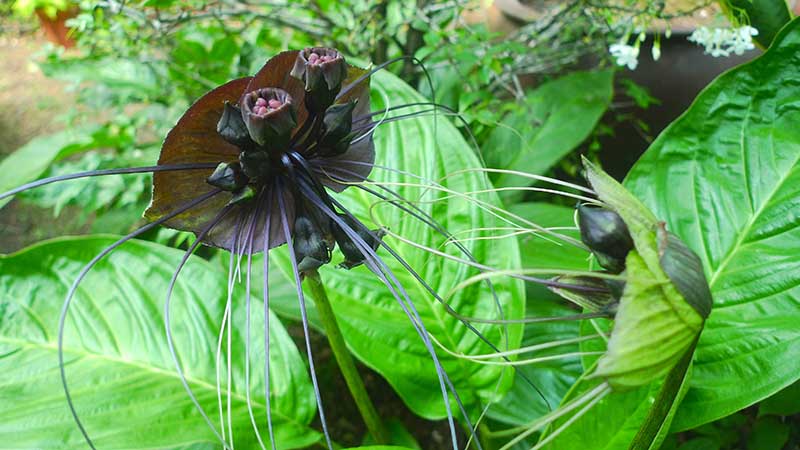
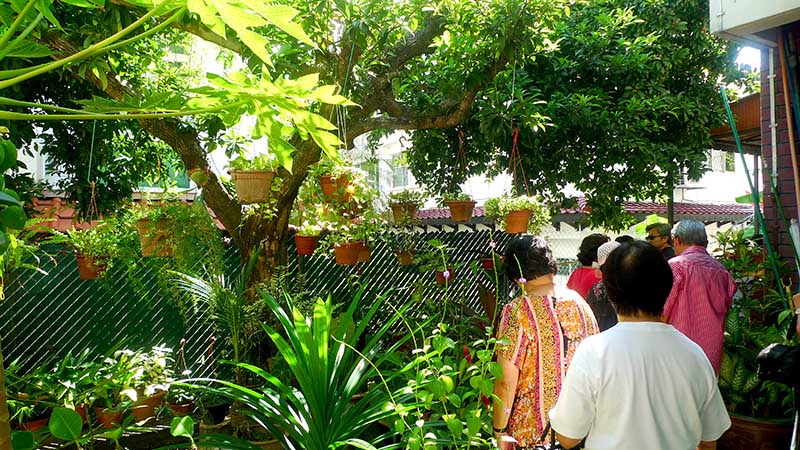
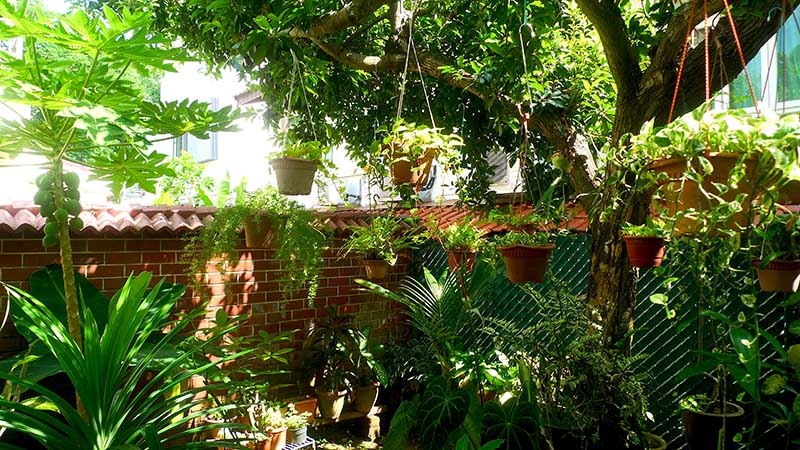
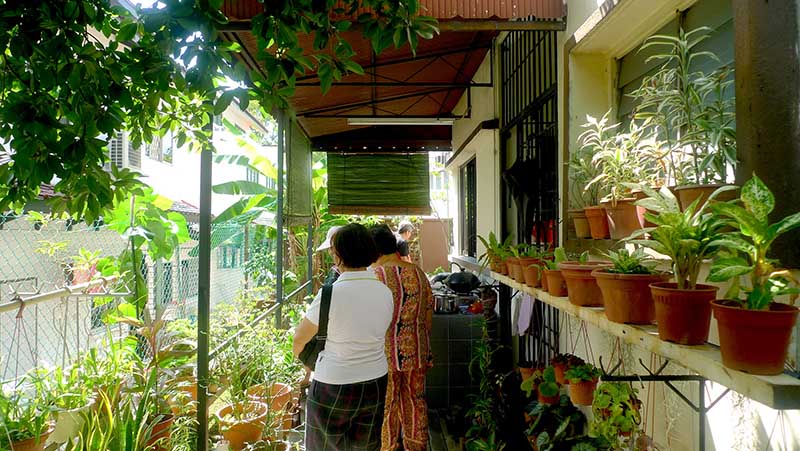
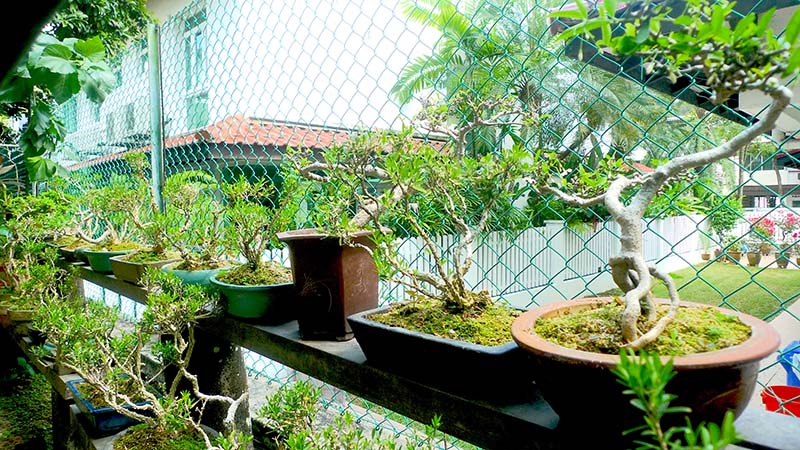
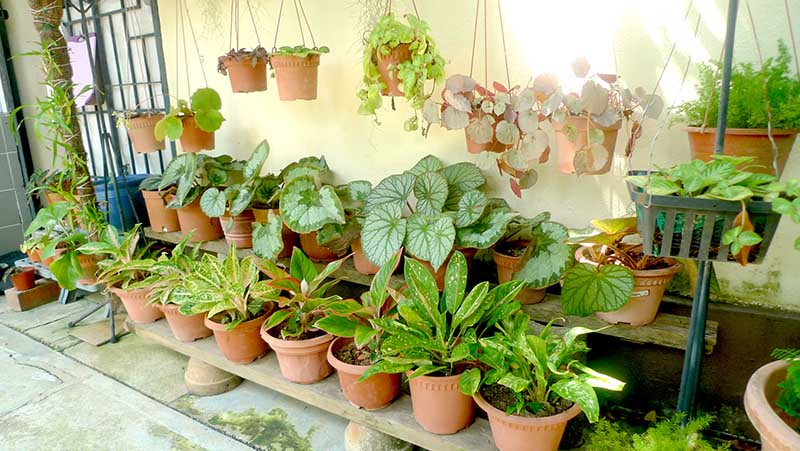
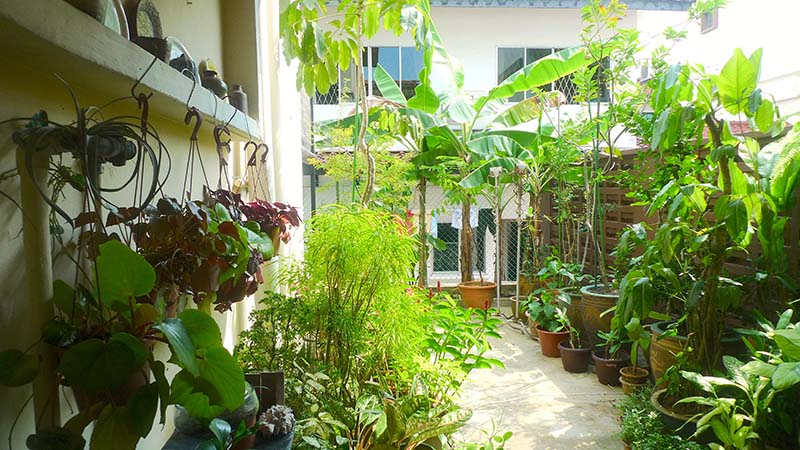
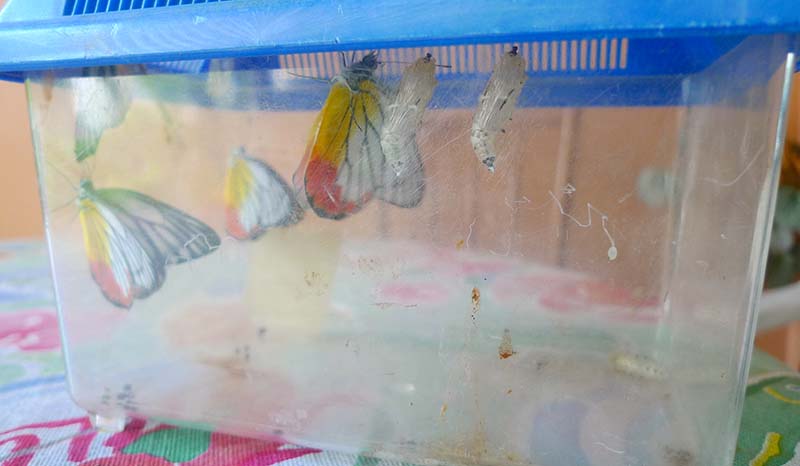
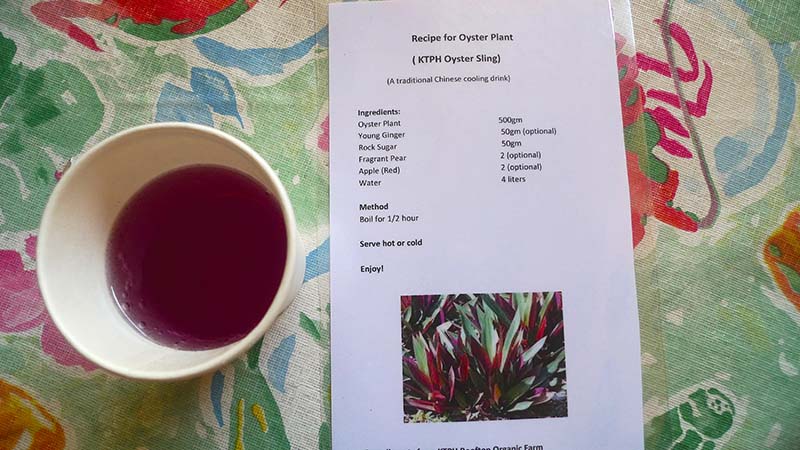
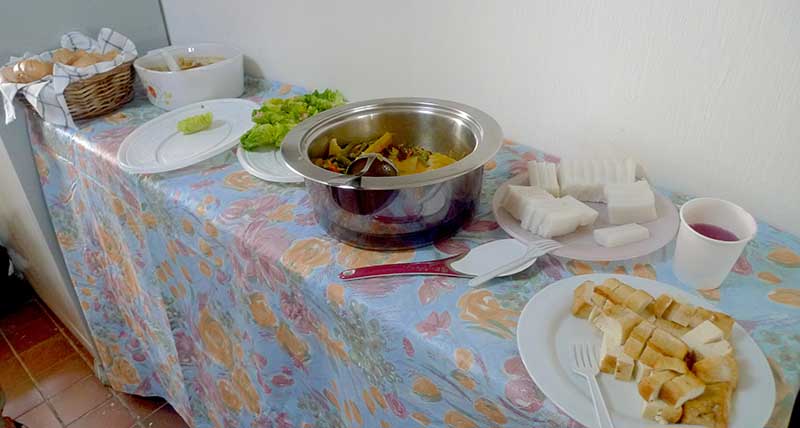

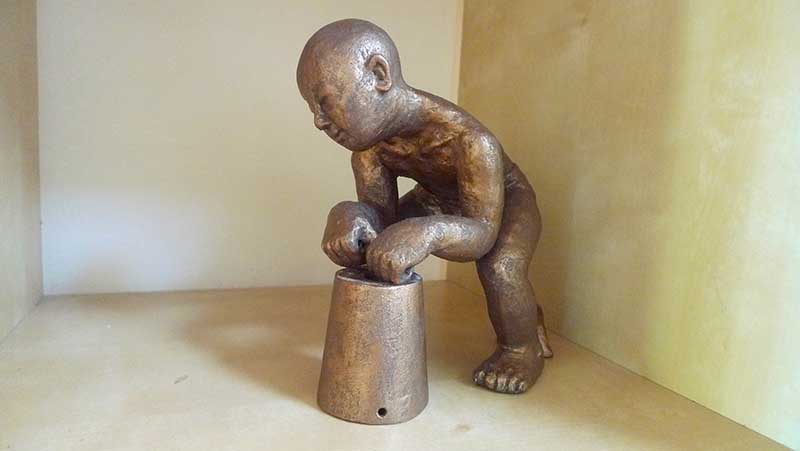
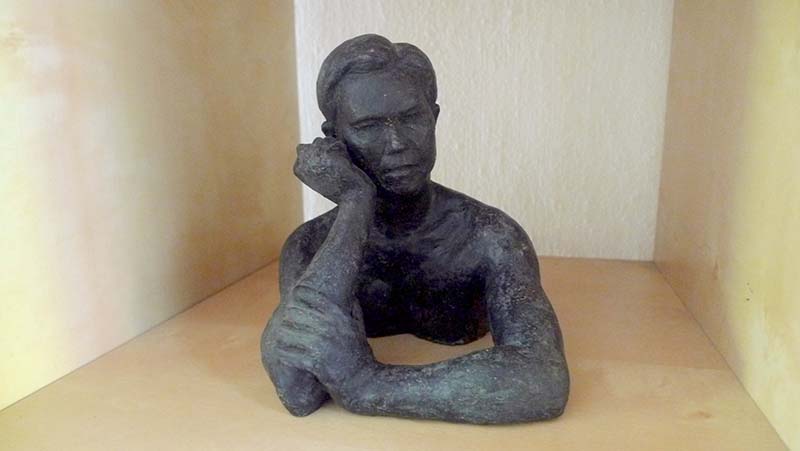
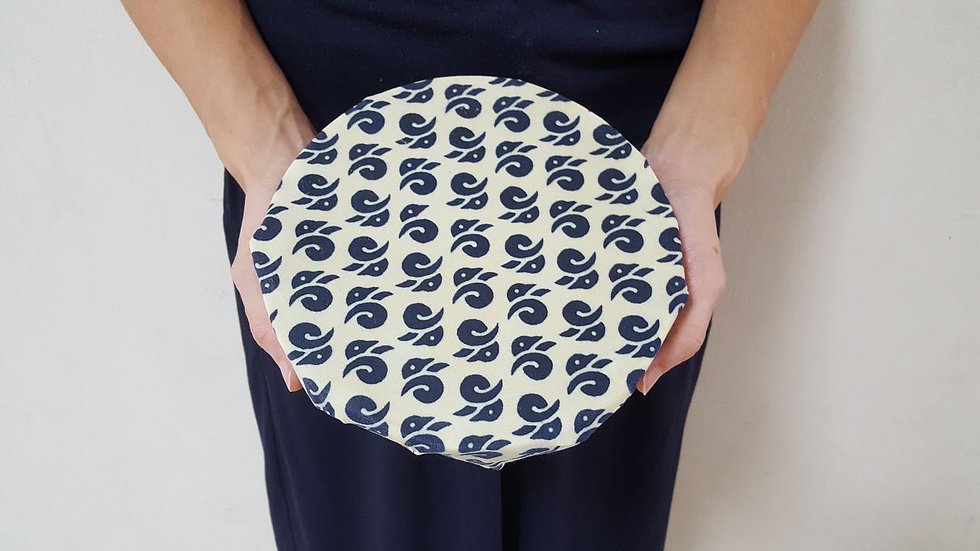
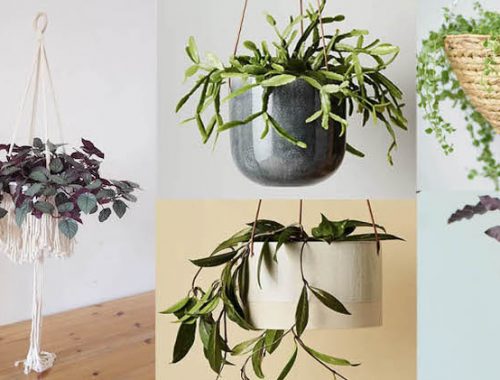
2 Comments
wow! that’s like flower shop already! Can sell her plants .so huge!
Bat lily’s or Bat plants are available here in SEQ if you do your homework. We have both the traditional very dark brown to black plants as well as one single white variant. I am still eagerly awaiting the first showing of the white plant which hopefully will be later this year. Traditionally for us, that’s sometime from November through to about April / May – (ours are still in bloom at the end of this first week of June – we are at Bribie Island north of Brisbane). I am told there is a lighter fawn to browny, bronze cross between those two traditional colours which I would be very keen to obtain. We have also found Bat plants throw more and more “pups” (sections of new growth) and like to add that whole new section continually after that first year. They are very easy to divided in their existing pot by using a long sharp knife and sectioning their existing root system underground. Without disturbing anything, we then leave them where they are in their existing pot for another 2 to 3 weeks which allows everything to stabilize. Afterward, its simply a matter then of repotting everything and refurbish with a very good potting mix. We have the most success utilising self watering hanging baskets (the plastic type from Bunnings….. Good luck ..